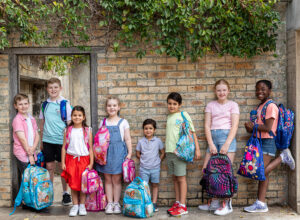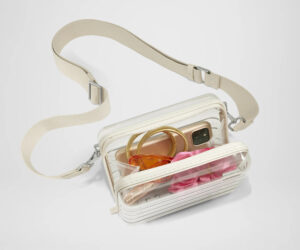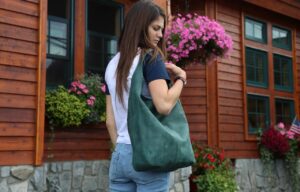Introduction
The Lexical Conundrum
Ever heard someone say “bookbag” and thought, “Isn’t that just a backpack?” You’re not alone. These terms often spark confusion, thanks to regional slang and overlapping functionality.
While both words refer to bags you carry on your back, their origins and usage tell a bigger story.
Regional Language Variations
In most English-speaking places, “backpack” is the standard term. But in parts of the U.S., especially in schools, “bookbag” is more common.
It reflects regional preferences and cultural habits. For businesses, using these terms correctly can make a big difference in how your products are perceived.
Why It Matters for Businesses
For manufacturers and sellers, knowing these distinctions isn’t just about sounding right. It’s about connecting with your audience. Is It a Backpack or a Bookbag
Calling a student’s bag a “bookbag” in the Midwest might resonate more, while “backpack” works better in other regions or global markets. Small details like these can impact your marketing success!
Regional preferences like “bookbag” (US Midwest) vs “backpack” (global standard) impact marketing strategies.
For manufacturers, aligning terminology with regional expectations is crucial – explore Pecbags’ full product range for market-specific solutions.
Lexical Origins and Usage
Etymology of “Backpack”
The term “backpack” combines two simple words: “back,” referencing the body part, and “pack,” meaning a load-carrying device.
This word first appeared in 1886 in The New York Times, describing a hiker’s canvas bag designed to bear weight. Over time, it spread globally, finding its way into other languages like German (Rucksack) and French (sac à dos).
Despite the linguistic variations, the functional definition remained consistent—bags designed for carrying loads on the back.
Origins of “Bookbag”
“Bookbag,” on the other hand, emerged as a slang term in American English in the early 20th century. It was coined specifically to describe bags meant for carrying textbooks, combining the words “book” and “bag.”
This term gained traction in the American South and Midwest, where it remains popular today. 68% of Google searches for “bookbag” originate from these regions, according to data from 2024.
Why These Origins Matter
These linguistic roots highlight how function and culture shape language. For example, “backpack” evolved from outdoor usage, while “bookbag” reflects its academic roots.
Recognizing these differences helps sellers and manufacturers choose the right terminology for different audiences and markets.
Design and Functional Differences
Structural Features
When it comes to design, “backpacks” and “bookbags” stand apart in structure and functionality:
| Feature | Backpack | Bookbag | PEC Equivalent |
|---|---|---|---|
| Compartments | Multi-organization | Minimalist | Tech backpacks |
| Material | Durable nylon/polyester | Canvas/vinyl | Waterproof options |
| Capacity | 15-80L | 10-20L | Hiking backpacks |
| Use Case | Travel/outdoor | Academic | School bookbags |
Ergonomic Design
- Backpack: Designed for comfort and durability. Padded back panels, adjustable straps, and even waist belts help distribute heavy loads evenly. Ideal for hiking, travel, or long commutes.
- Bookbag: Simpler in design, with basic back padding. Lightweight and perfect for short-term use, like carrying books or notebooks to school.
These functional differences make it easier for bulk buyers to choose the right option. For example, if your audience is students, bookbags may suffice.
But for professionals or travelers, a well-designed backpack is a better choice.
Cultural and Regional Usage
Academic vs. Recreational Contexts
- Academic Settings:
Bookbags dominate K-12 markets → Simple designs from backpack manufacturers - Backpacks preferred in universities → Feature-rich travel backpacks with laptop sleeves
- Recreational Use:
When it comes to outdoor activities like hiking, sports, or travel, “backpack” is the universal choice. Its durable materials, ergonomic design, and larger capacity make it ideal for recreational use. - In contrast, “bookbags” are rarely seen outside academic contexts, as they are not designed for heavy or multi-purpose use.
Regional Naming Trends
The choice between “backpack” and “bookbag” also varies by region and culture:
| Region | Preferred Term | Cultural Context |
| US South/Midwest | Bookbag | Popular in rural areas, where it’s associated with budget-friendly school bags. |
| US Northeast/Coast | Backpack | Common in cities, reflecting urban lifestyles and demand for higher-end brands. |
| UK/Australia | Backpack | “Bookbag” is rarely used; “rucksack” is often reserved for outdoor or hiking models. |
Understanding these cultural and regional preferences helps businesses tailor product names, designs, and marketing strategies to local consumer behavior.
For instance, a school-focused campaign in the Midwest could emphasize “bookbags,” while urban markets in the Northeast would likely respond better to “backpacks.”
Market and Consumer Perception
- Price and Brand Positioning
- Backpacks: These range widely in price, from $20 for basic models to $300+ for luxury brands like Tumi. Higher-priced backpacks often include premium features such as laptop compartments, waterproofing, and ergonomic designs, catering to professionals and travelers who value functionality and style.
- Bookbags: Positioned in the $10–$50 range, bookbags are designed with affordability in mind. They primarily target parents shopping for school-aged children, offering simple designs that meet basic needs without breaking the budget.
- Consumer Demographics
- Backpack Buyers: Adults make up 70% of the buyers, often choosing backpacks for work, travel, or outdoor activities. Teens account for 25%, with many using backpacks for sports, extracurricular activities, or school.
- Bookbag Buyers: The majority of bookbag buyers (85%) are parents purchasing for children aged 5–12. These buyers prioritize durability and price over advanced features, as the bags are meant for daily school use.
For manufacturers, understanding these price ranges and consumer demographics is essential for tailoring production.
For example, premium backpacks with technical features can target professionals, while affordable bookbags can meet the needs of budget-conscious parents.
Historical Evolution
- Backpack Timeline
- 1930s–1960s: Backpacks began as military surplus items, made of canvas and used by hikers for their durability and load-carrying capacity.
- 1970s–1990s: Jansport revolutionized the market by introducing padded straps and ergonomic designs. This made backpacks the go-to choice for college students, blending comfort with functionality.
- 2000s–Present: Modern backpacks now feature tech-friendly designs, including laptop sleeves, USB charging ports, and anti-theft compartments, meeting the demands of a tech-driven lifestyle.
- Bookbag Evolution
- 1900s–1950s: Early bookbags were simple canvas satchels, designed primarily for carrying textbooks to and from school.
- 1960s–1990s: Bookbags evolved with the introduction of vinyl and nylon materials. Many featured colorful cartoon prints, appealing to children and making them a staple in K-12 schools.
- 2000s–Present: As backpacks began incorporating academic features like laptop compartments, bookbags saw a decline in popularity. Today, they are less common, primarily used in specific regions or as budget-friendly options for younger students.
These historical shifts highlight how both backpacks and bookbags have adapted to changing consumer needs. For brands, blending nostalgic elements with modern features can create products that resonate with today’s buyers while staying practical.
Why Partner with Pecbag for OEM/ODM Custom Belt Bags and Pouches?
Expertise in Customization
At Pecbag, we specialize in creating tailored designs that align with specific market needs. Whether it’s ergonomic backpacks for professionals or budget-friendly bookbags for students, we’ve got you covered.
We can also incorporate advanced features, such as RFID-blocking compartments for security, laptop sleeves for functionality, and eco-friendly materials to meet sustainability demands.
Manufacturing Excellence
Our manufacturing process combines quality and efficiency. With a proven capacity for bulk orders, we deliver competitive pricing without compromising on quality.
We work with a wide range of materials, from recycled fabrics for eco-conscious brands to premium leather for high-end products.
Market Insight and Support
Pecbag offers more than just production—we provide market expertise. We guide you on regional naming conventions, like when to use “bookbag” versus “backpack,” to maximize consumer appeal in different markets.
We also assist with branding, offering logo placement, custom packaging, and promotional materials to strengthen your brand’s identity.
By partnering with Pecbag, you ensure a seamless, cost-effective production process that’s perfectly aligned with market trends and consumer needs. Let us help you bring your vision to life!
Why Partner with PEC Bags?
We bridge lexical and functional gaps through:
- Regional Customization:
- “Bookbag” designs for US Midwest schools
- “Backpacks” for global urban markets
- Technical Specialization:
- Waterproofing from a dedicated factory
- Outdoor-ready camping/hiking gear
- Sustainable Solutions:
- Recycled materials across all product lines
Conclusion
- Key Takeaways
- Lexical Distinction: “Backpack” remains the global standard, while “bookbag” is a regional term in the U.S., primarily used in academic contexts.
- Design Gap: Backpacks are built for ergonomics and heavy loads, making them ideal for work, travel, and recreation. Meanwhile, bookbags focus on simplicity and affordability, catering to students.
- Cultural Context: Regional dialects and usage scenarios strongly influence term preferences. For example, “bookbag” resonates with Southern and Midwestern U.S. markets, while “backpack” is universally understood.
- Naming Recommendations
- For Formal Writing: Use “backpack” to avoid confusion and ensure clarity, especially in global communications.
- For Regional Marketing: Incorporate “bookbag” when targeting specific U.S. regions, such as the South and Midwest, to better connect with local consumers.
- Future Trends
- Functional Convergence: With backpacks increasingly adopting features like affordability and minimal designs, the traditional distinctions between backpacks and bookbags may fade over time.
- Sustainability: Both categories are shifting toward recycled and eco-friendly materials, reflecting growing consumer demand for sustainable products. This focus on sustainability is likely to redefine design and functionality in the long run.
By understanding these distinctions and trends, businesses can craft more effective strategies for product development, marketing, and branding.
Whether your focus is on ergonomic backpacks or budget-friendly bookbags, staying aligned with market preferences and future trends is key to long-term success.
For Manufacturers:
- US Midwest: Market “bookbags” as affordable academic solutions
- Global Markets: Position “backpacks” as versatile travel/hiking systems
Future Convergence:
Hybrid designs will merge academic simplicity with outdoor durability – a specialty of technical backpack manufacturers.
“The distinction fades as functionality evolves. Tomorrow’s bags will serve classrooms and trails equally well.” – Industry Analyst
Explore Custom Solutions: Request Product Catalog











